My test bench runneth over with lithium from SFK, Mastervolt, and Epoch

I have big things planned for upcoming battery tests. I’m working to improve my testing of LiFePO4 batteries to match their evolution. Battery capacities are increasing, physical size is decreasing, prices are dropping rapidly, and acceptance is increasing. New options hit the market regularly and keeping up with the pace of change can be challenging. In the coming months, I will review quite a few batteries in different positions in the market and try to help readers decide which price point and battery is right for them.
I don’t believe boaters are just after confirmation that a battery stores and outputs power at the ratings on the sticker. So, I’ve tried to evolve my testing to include a careful inspection of the physical construction, a teardown of the battery to basic components, exploration of advanced features of the battery, as well as the aforementioned testing of basic capacity, power output, and charge acceptance.
LiFePO4 batteries have gotten cheap enough and last long enough that we no longer have to try and justify that an LFP battery won’t cost much more over its entire life. Now, in head-to-head comparisons, LiFePO4 is available cheaper than all but the cheapest wholesale club GC2 golf cart deep cycle batteries.
Here is a rundown of some of the batteries I’m working on currently testing. I have a few more on their way so those will see testing soon.
Sun Fun Kits
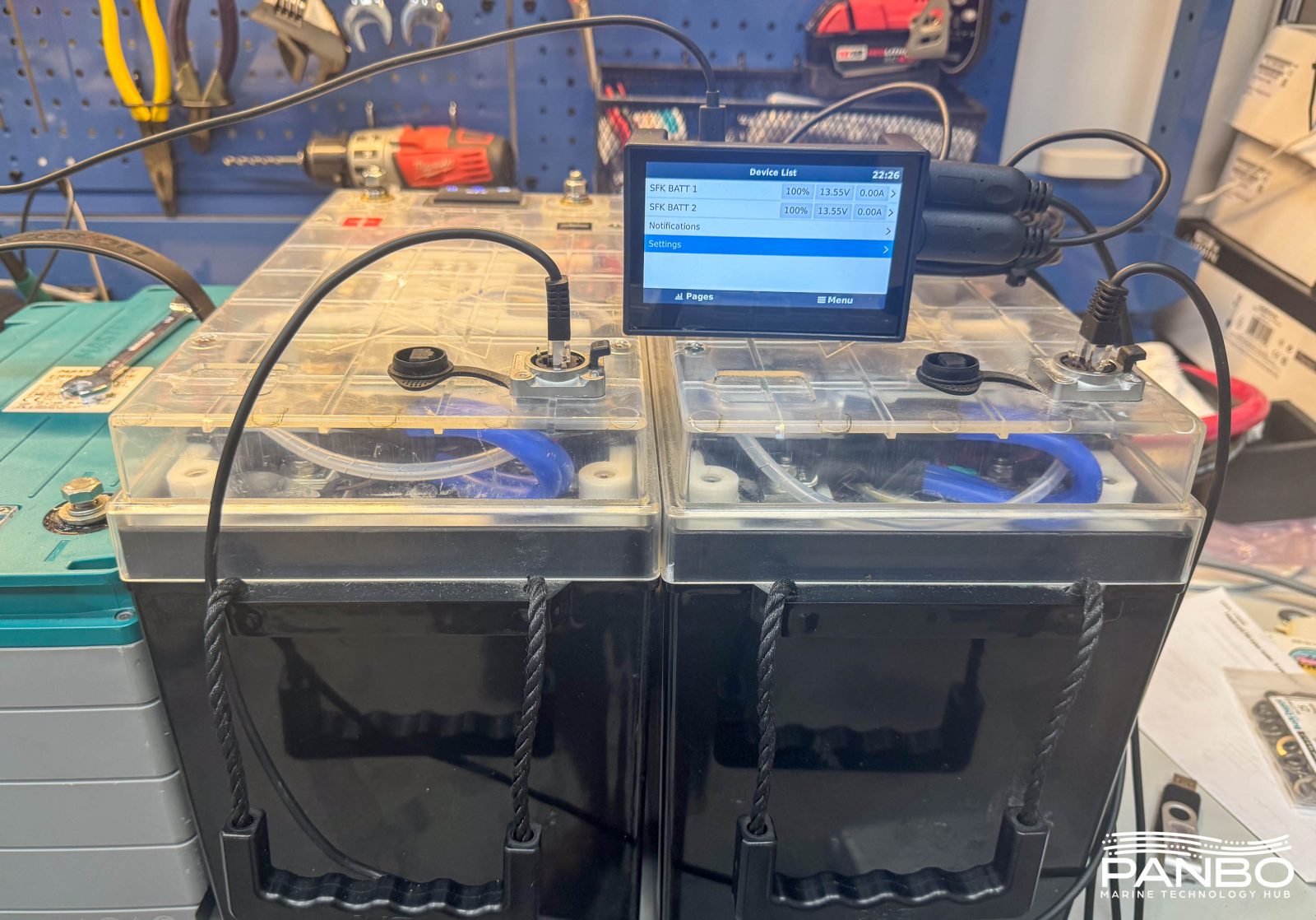
Until recently, I hadn’t heard of Sun Fun Kits and I certainly wasn’t aware of all the interesting things they’re doing with their batteries. As their (somewhat unusual) name implies, Sun Fun Kits started out selling, and still offers, DIY LiFePO4 battery kits. As the company has grown, they seem to be leaning into SFK as the company identity and focusing on pre-built batteries. I currently have two of their 275 amp hour batteries and I’m mighty impressed with them so far.
You might wonder what has me excited about these batteries. I’ve reviewed a lot of batteries at this point but the SFK batteries blend feature richness, space and weight efficiency, and an affordable price point like nothing else I’ve seen. The batteries have features like both active and passive balancing, Victron comms, heating, and much more. At 7.5 inches wide by 13.6 inches long and 10.6 inches tall, the 275 amp hour SFK-275EX batteries I have are smaller on a proportional basis than any other battery I’ve reviewed. Additionally, at only 57.7 pounds, they’re impressively light. Plus at $1115 starting price, they offer strong value.
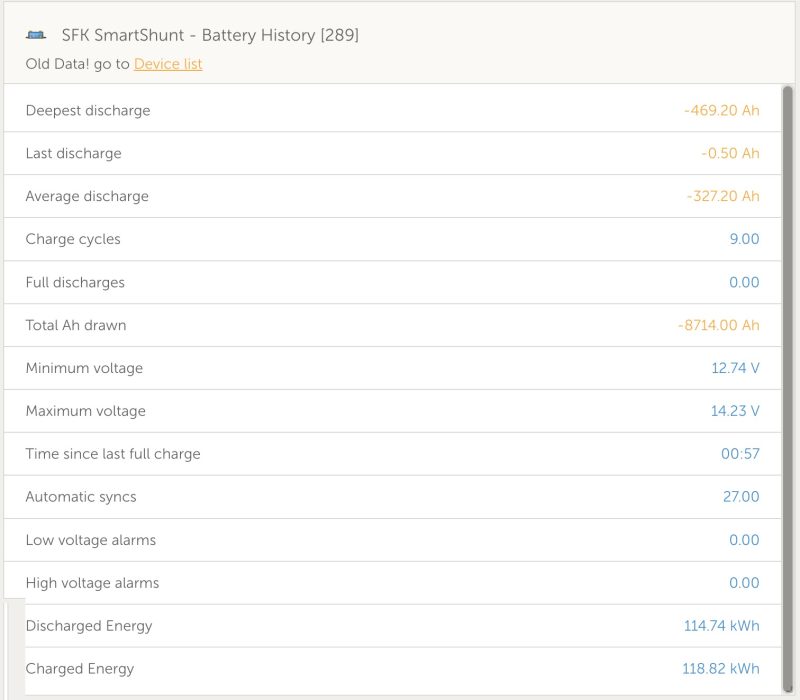
They also use a novel approach to connect to a Victron GX instance. Rather than the typical CANBus connectivity, SFK relies on a USB connection from the battery to Venus OS. I used these batteries for over two months this summer in my RV and experienced no issues with this approach. Plus, as you can see, with a minimum voltage of 12.74 volts, the batteries performed flawlessly and the GX connectivity never skipped a beat.
Mastervolt
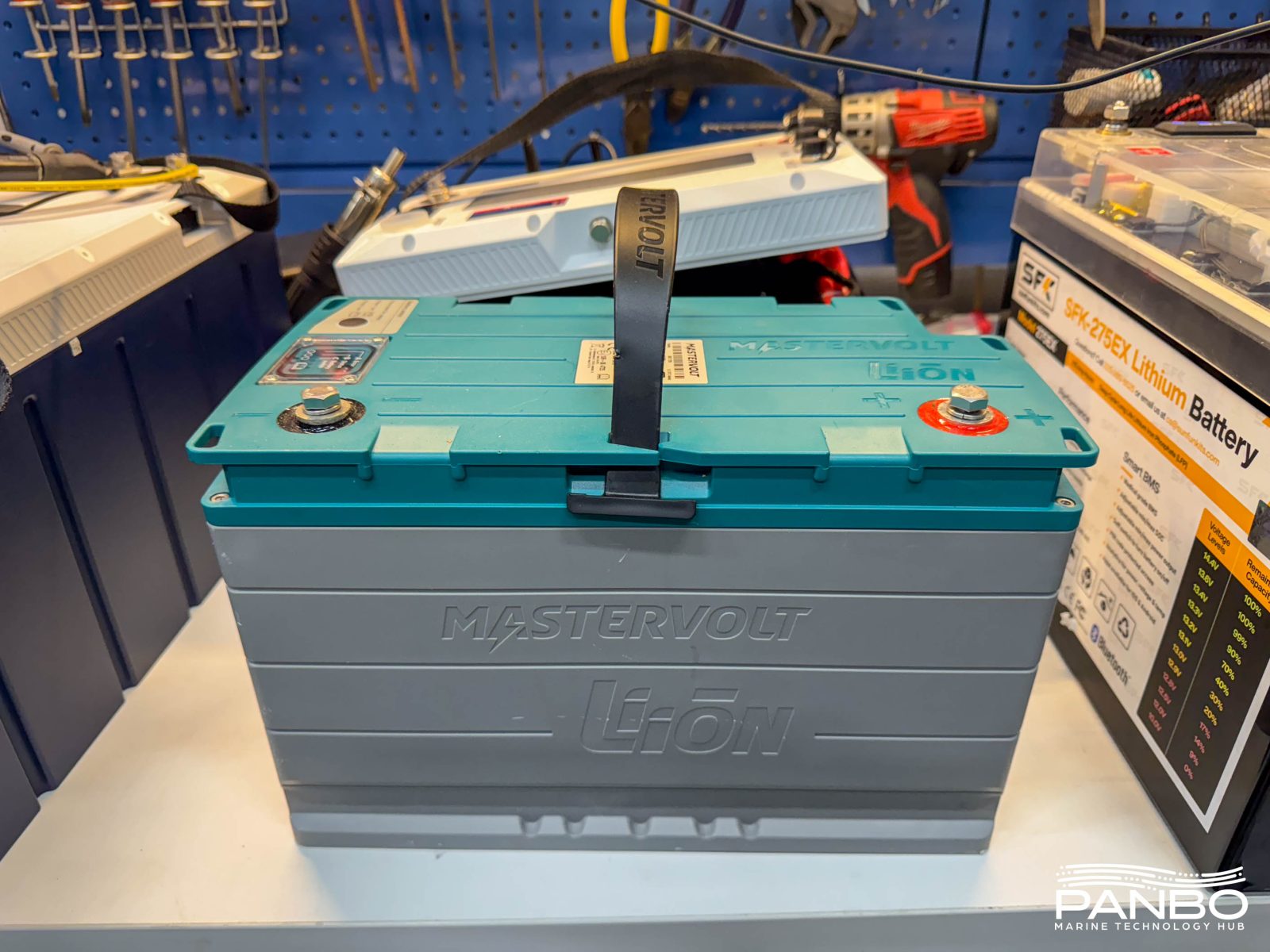
It has been a while since I’ve reviewed a Mastervolt MLi Ultra series battery. In fact, my the last MLis I reviewed were the the pair installed on Have Another Day. The MLi Ultra 12/1250 is the smallest member of the MLi Ultra series but sacrifices none of the features of its larger siblings. In fact, in at least one major way, it is more refined than it’s big brothers and sisters.
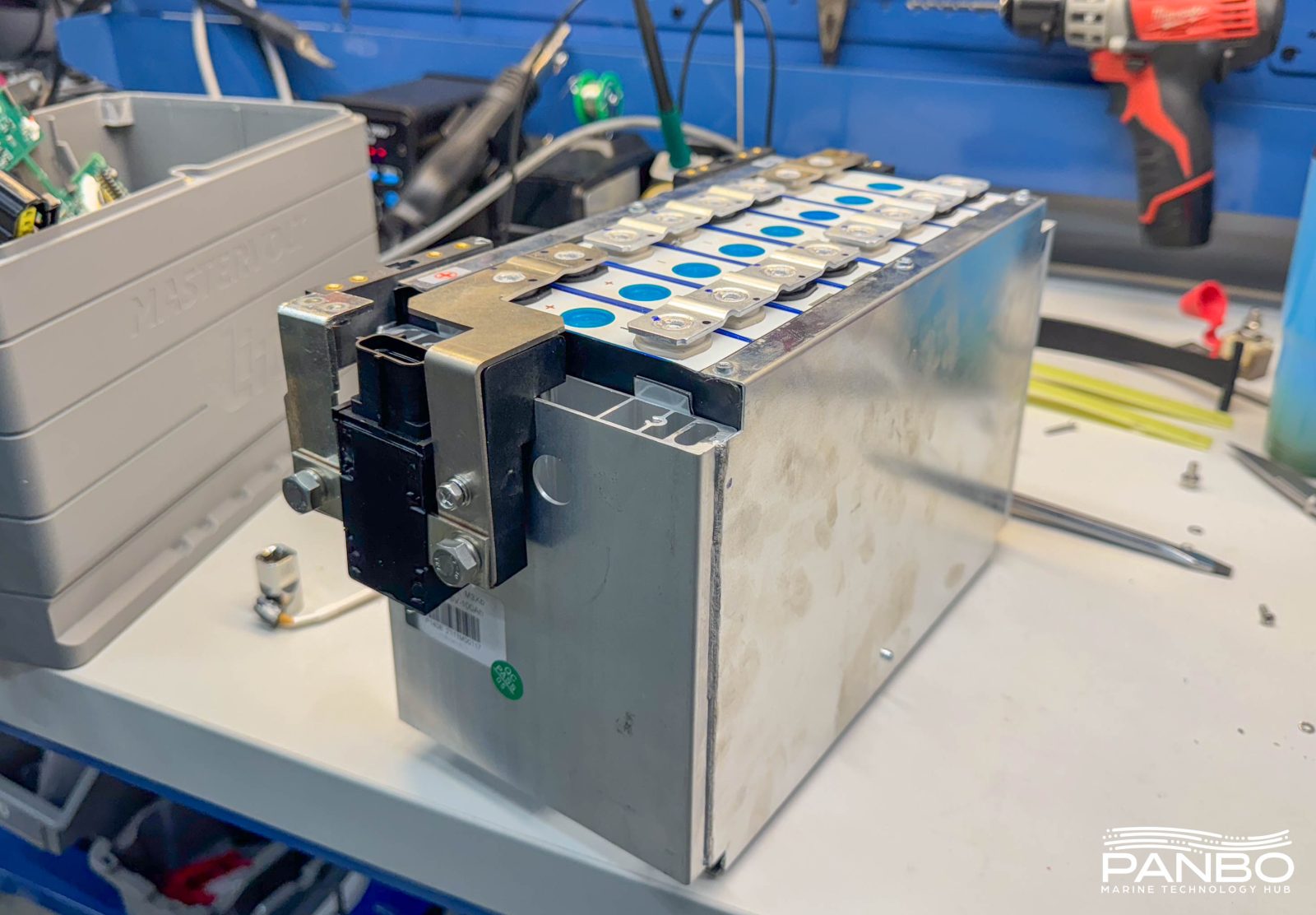
Unlike nearly every other battery I’ve reviewed, MLi Ultra batteries utilize a contactor or relay to control the battery and shut down power in the event of an issue. Previous MLi batteries have used Blue Sea’s excellent remote battery switch (RBS) for this. While the RBS is a great piece of kit, it is also external to the battery and requires wiring in both in large, current carrying wire and control wires. The 1250 moves that relay into the case of the battery. The continuous duty, bi-stable relay nestled at the end of the battery pack carries a 260 amps of continuous current rating. So, mounted in a 100 amp hour battery, it has ample capacity.
With a street price of around $1,800,(I found the batteries for less at Fisheries Supply, around $1,300) this is a premium battery with the features to match. The battery is compatible with Masterbus, C-Zone, and NMEA 2000 communications, offers heating, autosetting of Mastervolt chargers, supports 2C charge, and discharge, and supports unlimited parallel connections.
I’m in the midst of testing the battery and look forward to publishing my results soon. In the meantime, I can report that I drew over 200 amps from the battery continuously with nearly no heat.
Epoch dual purpose batteries
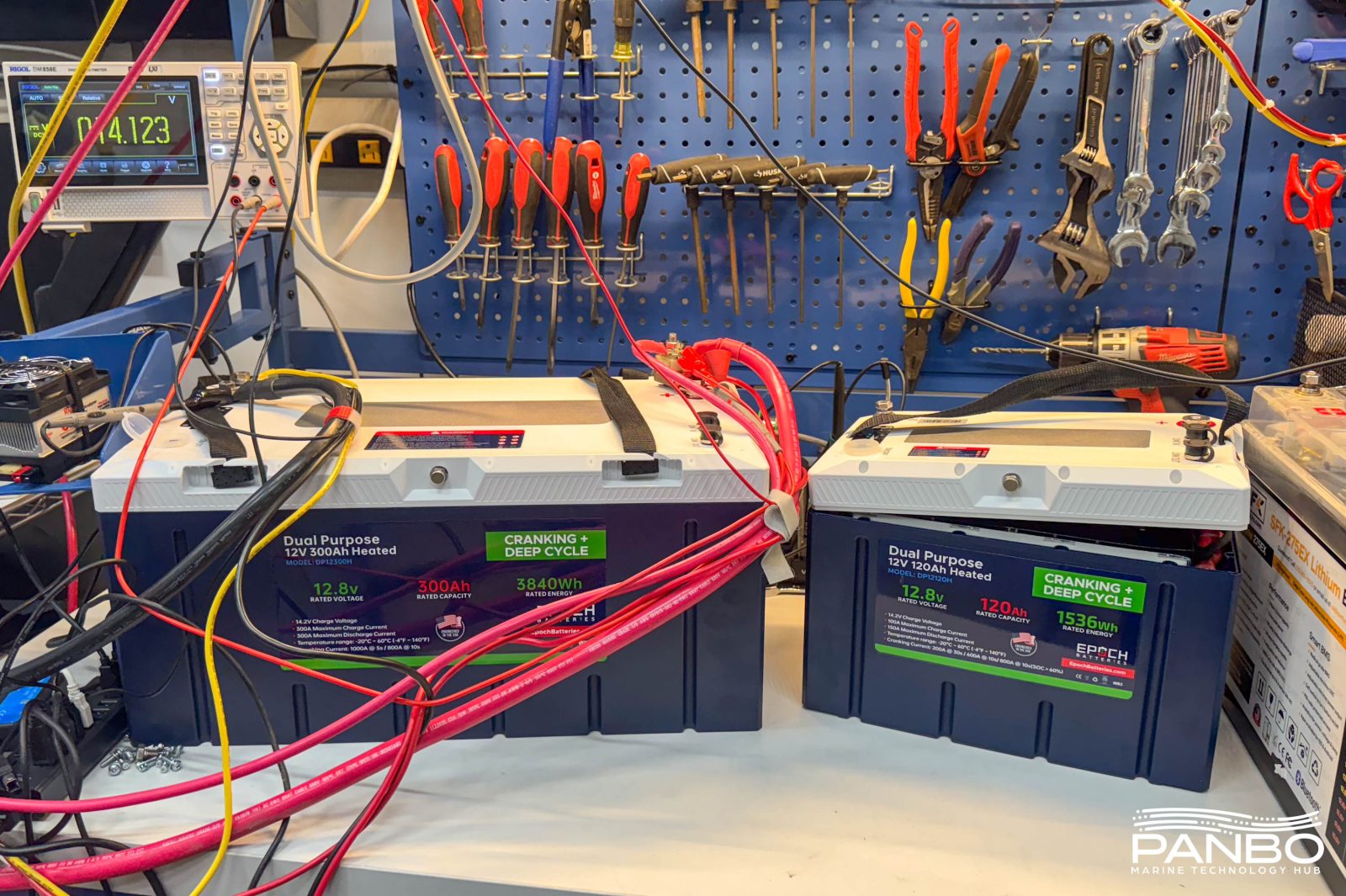
LiFePO4 batteries meet house and other deep cycle applications extremely well. But, until very recently, they simply haven’t been a good fit for engine starting applications. The inrush current of a starter motor represents a challenging load for most BMSes. Additionally, many engine alternators charge settings don’t match the needs of LiFePO4. I reviewed a battery from Lithium Pros that could start engines, but that premium battery relied on super capacitors to meet the inrush demands. However, in the last year or so we have seen more and more LFP batteries aimed at engine starting applications.
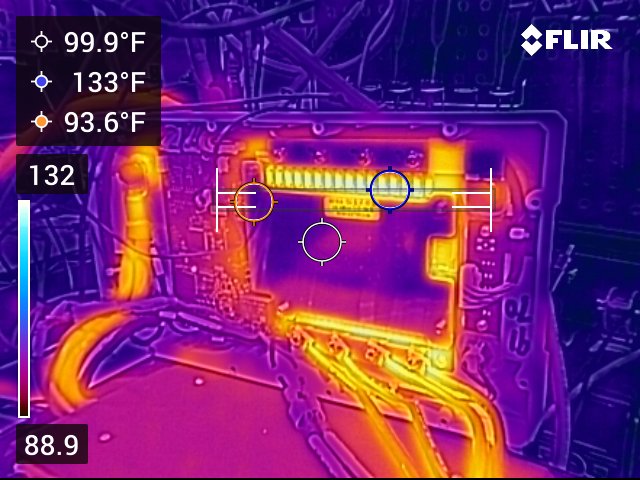

Epoch now offers both 120 and 300 amp hour dual-purpose batteries. The 120 amp hour, group 27 sized battery supports continous discharge loads of 150 amps and peak discharge of up to 800 amps for 10 seconds. The 300 amp hour, 8d battery supports continuous loads of up to 300 amps and peak loads of 1,000 amps for 5 seconds as well as 800 amps for 10 seconds. The thermal image above shows the heat produced from a 150 amp continuous discharge. 133 degrees indicates to me the battery isn’t working too hard.
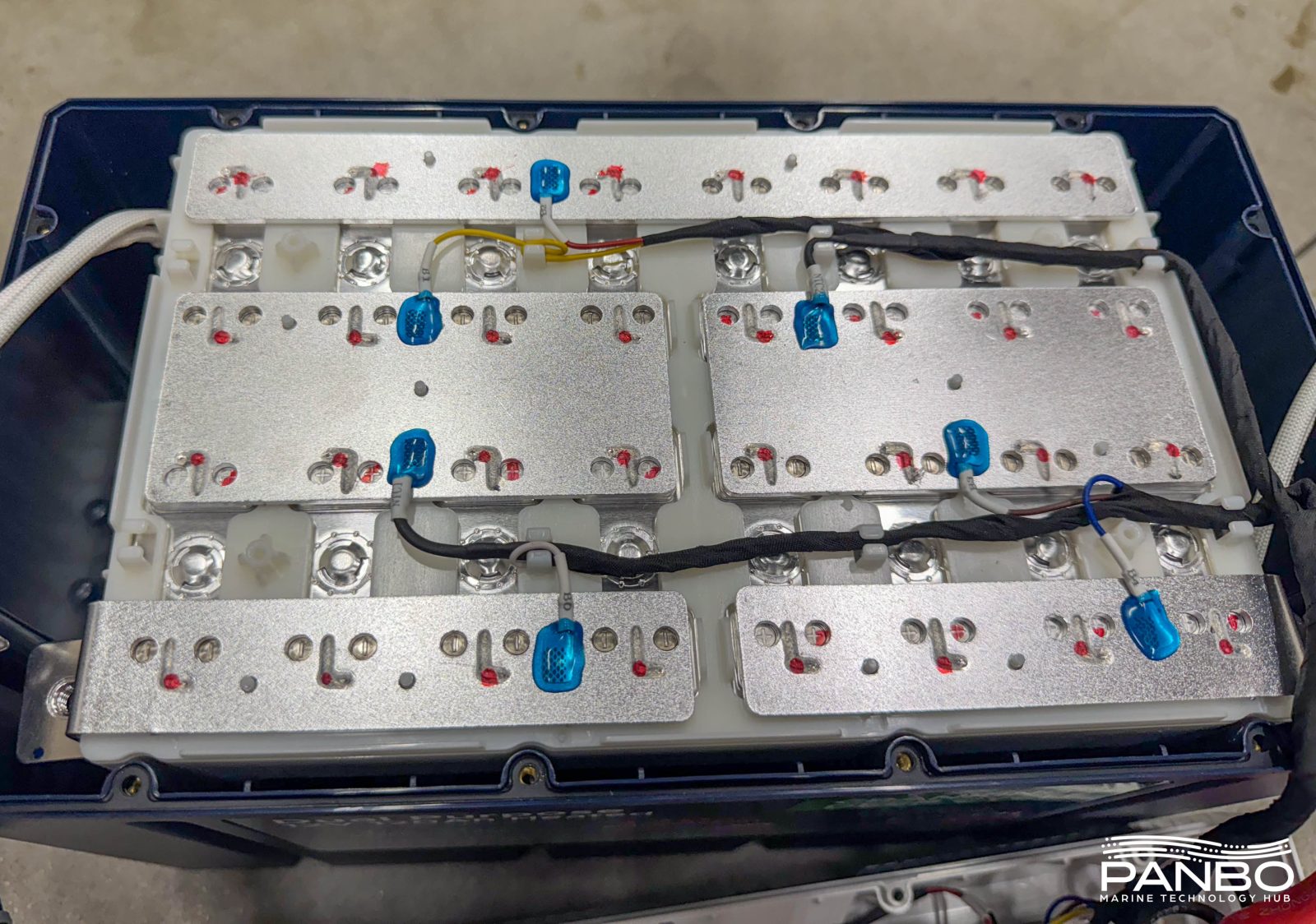
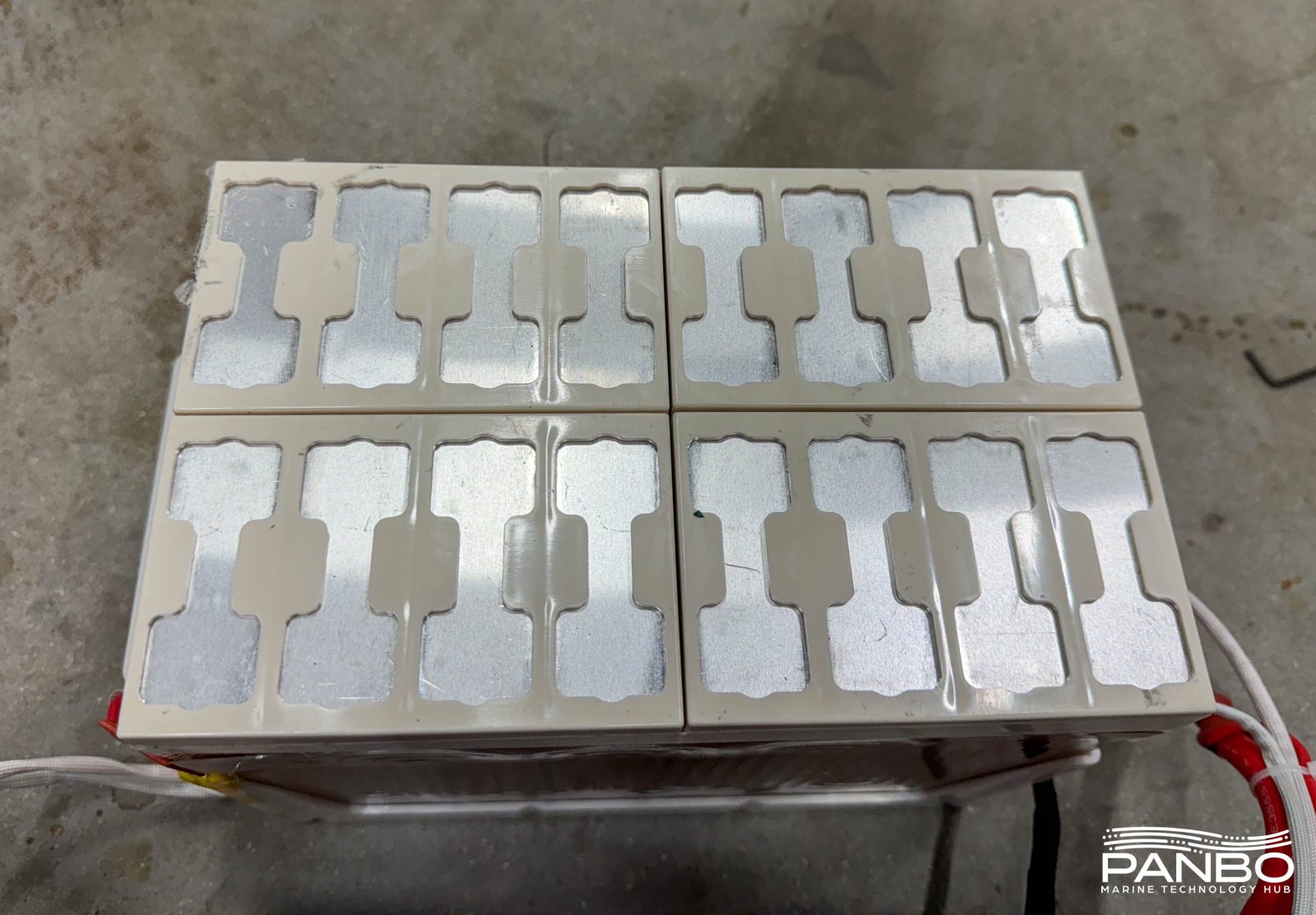
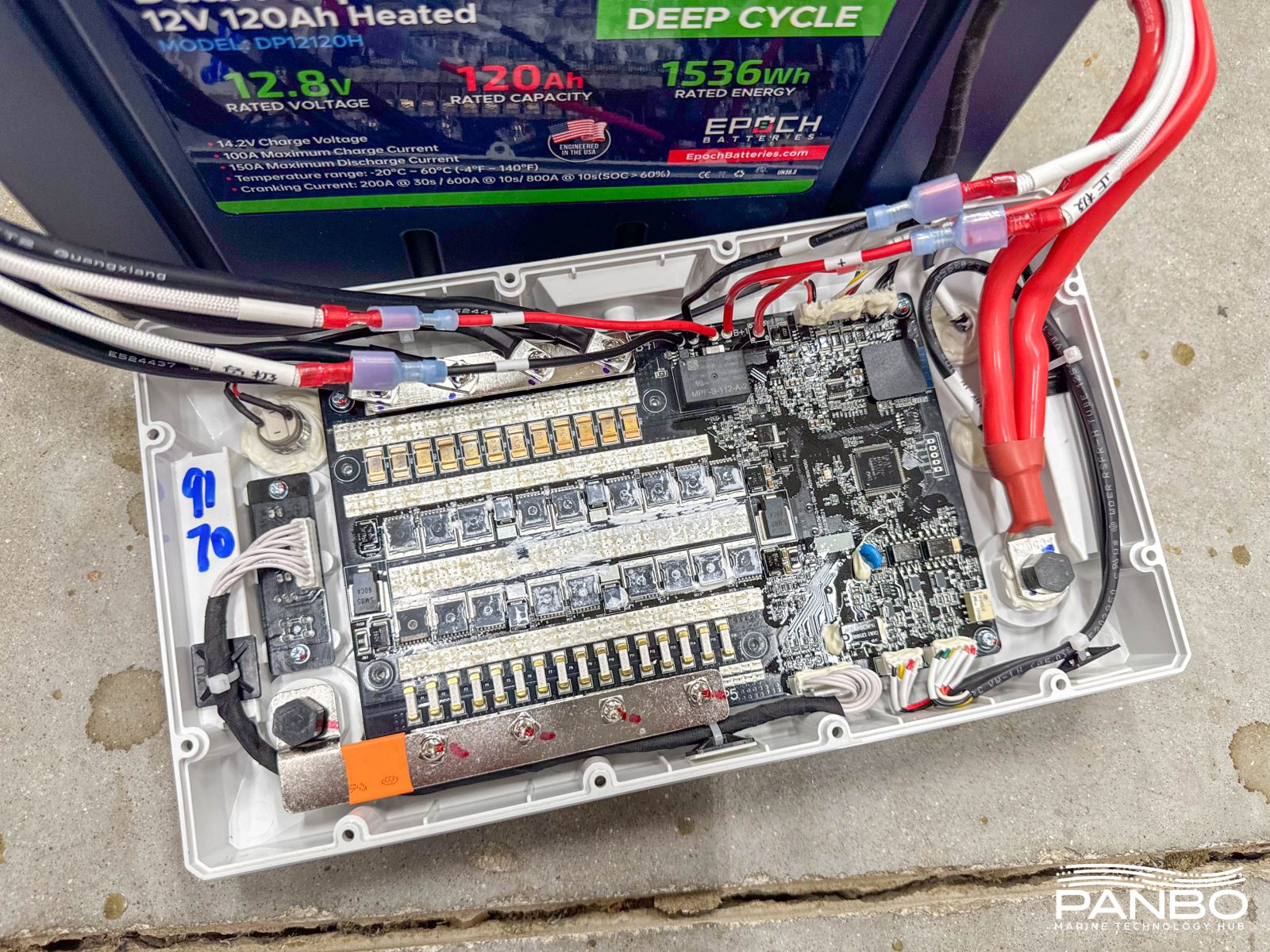
As you can probably see from the tipped up cover in the family picture, I’ve completed a tear down of the 120 amp battery. Inside, I found a well built battery with a beefy BMS. Interestingly, this 120 amp hour battery utilizes 16 cells in a 4 series by 4 parallel configuration. I suspect the cell count is used to deliver the huge current rating, especially the 800 amp peak.
I haven’t had as much time with the newly released 300 amp battery so I’ll have to reserve most of my judgement on that one.
More updates on coverage and a new test platform
In addition to upcoming LFP coverage, I’m excited about some on the water testing. I’m about to start testing Tocaro Blue’s Proteus 3D navigation display. Proteus uses radar, sonar, and AIS to identify targets around the boat and provide a simple and easily understood view around the boat. Proteus will likely be the first product tested aboard the new Panbo(at). Tomorrow, I’m heading up to Bradenton, FL to pick up a new to me Edgewater 280CX. Hopefully this larger test platform will ease the challenge of head-to-head product testing. The current 22-foot Cobia Panbo(at) has served me extremely well but I’ve simply run out of room on the boat. I’ve often threatened to rename it 5-pound bag owing to the fact I’ve jammed 10 pounds of, umm, stuff on it. Instead, I’ve just bought a bigger bag. So, it looks like Ben Ellison isn’t the only one selling a boat. If you find yourself in the market for a highly upgraded and well loved 2016 Cobia 220CC, let me know!


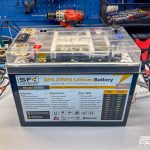
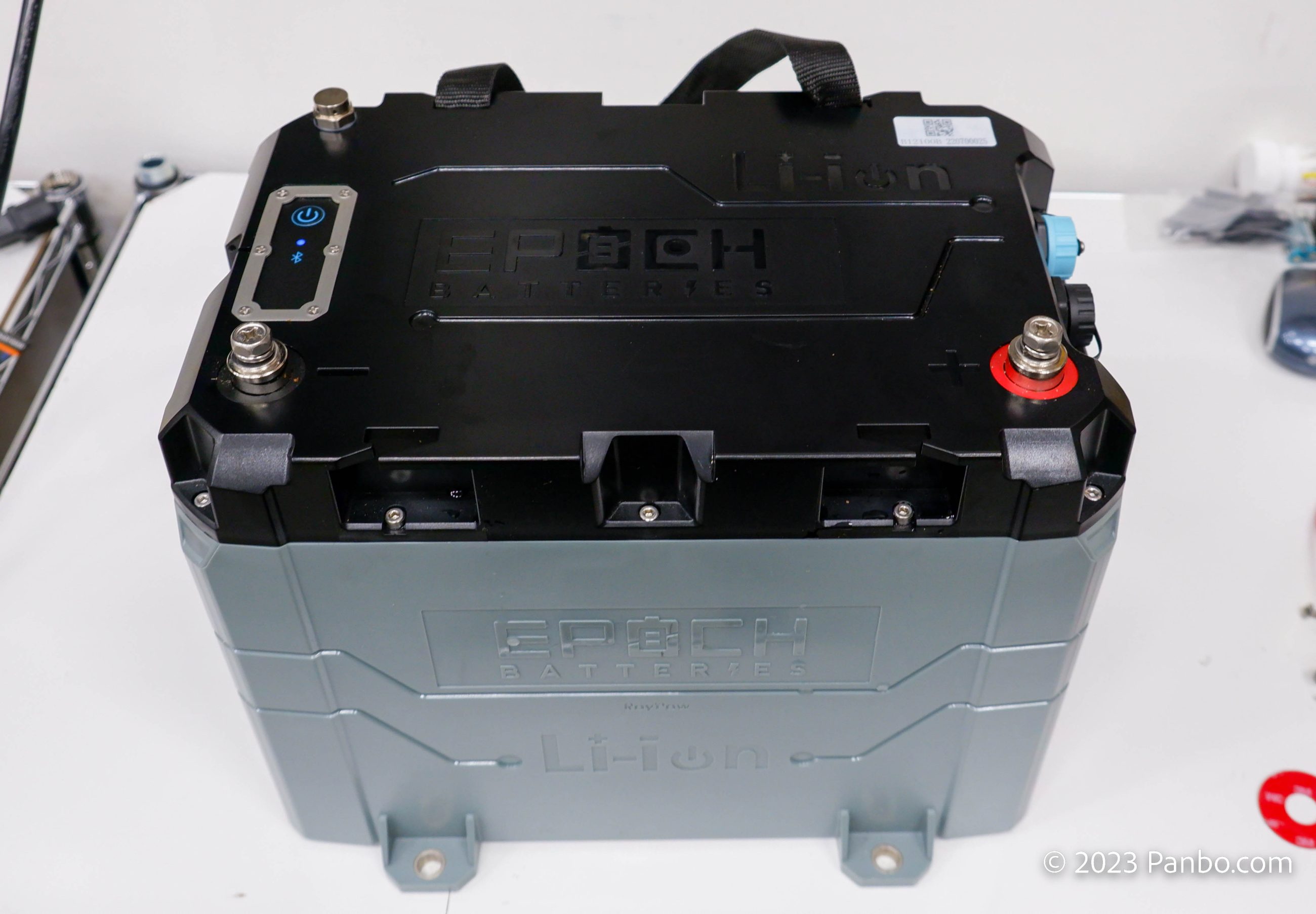









Fascinating. Can I ask if in your archives I can find a guide to Starting Over? VALENCIA is an Olin Stephens sloop, 1958, with old systems and parasitic drains galore. I gotta start from scratch, I think, except perhaps the wires that run to the mast head.
Nice testing and looking v forward to your findings.
IN you opinion, there any reason other than price to go to a fluid fill battery and checking cells in somewhat awkward ares on a boat, instead of the Gel,AGM batteries?
thanks
John
There’s lot’s happening quickly in the “drop in” LFP battery world. I have a Holland 38 with 12 volt house battery (4 Trojan T-145’s) and a robust charging system (Amptech L200 alternator, Balmar MC618, SG200, bluetooth and battery & alternator temp sensors) plus 400 watts of solar. This system is capable of sustained 135 amp charge rate in bulk with alternator temp below 70 deg C. I manually control the switch from absorption to float by monitoring the tail current and using a regulator “Force to Float” switch.
I’m waiting for an LFP battery BMS with the capability to close a pair of contacts based on SOC, tail current, completion of cell balancing or impending shutdown) This would allow a the criteria to be selected based on maximizing battery life or maximizing capacity when needed and I believe would meet the safety requirements.
Do you see this coming on any of the drop in batteries?
Thanks, Charlie
Charlie,
It’s been an embarrassingly long time but I’m finally wrapping my review of the Mastervolt MLi 12/1250 pictured on my bench above. That battery has a relay that can be triggered based on a number of conditions including safety limits, state of charge, etc. So, I think it would do exactly what you’re after. Albeit, at a premium price.
-Ben S.